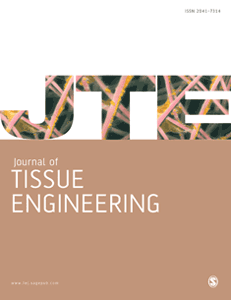用于呼吸系统和肺部疾病建模的先进肺器官模型
IF 6.7
1区 工程技术
Q1 CELL & TISSUE ENGINEERING
引用次数: 0
摘要
在最近的冠状病毒病 2019(COVID-19)大流行中,呼吸系统研究取得了显著进展,尤其是在传染病方面。肺器官模型是一种再现肺组织的微型结构,因其优于二维(2D)细胞模型和动物模型等其他传统模型而受到全球关注。然而,与原生肺组织相比,肺器官组织仍然面临着异质性、复杂性和成熟度等方面的限制。为了解决这些局限性,研究人员采用了与各种细胞类型(包括内皮细胞、间充质细胞和免疫细胞)共培养的方法,并结合了气液界面、微流控芯片和功能性水凝胶等生物工程平台。这些进步促进了肺器官组织在肺部疾病研究中的应用,为疾病机制和潜在治疗提供了见解。本综述介绍了肺器官组织生产方法的最新进展,提高器官组织成熟度、功能性和复杂性的策略,以及它们在呼吸道感染和肺纤维化等疾病建模中的应用。本文章由计算机程序翻译,如有差异,请以英文原文为准。
Advanced lung organoids for respiratory system and pulmonary disease modeling
Amidst the recent coronavirus disease 2019 (COVID-19) pandemic, respiratory system research has made remarkable progress, particularly focusing on infectious diseases. Lung organoid, a miniaturized structure recapitulating lung tissue, has gained global attention because of its advantages over other conventional models such as two-dimensional (2D) cell models and animal models. Nevertheless, lung organoids still face limitations concerning heterogeneity, complexity, and maturity compared to the native lung tissue. To address these limitations, researchers have employed co-culture methods with various cell types including endothelial cells, mesenchymal cells, and immune cells, and incorporated bioengineering platforms such as air-liquid interfaces, microfluidic chips, and functional hydrogels. These advancements have facilitated applications of lung organoids to studies of pulmonary diseases, providing insights into disease mechanisms and potential treatments. This review introduces recent progress in the production methods of lung organoids, strategies for improving maturity, functionality, and complexity of organoids, and their application in disease modeling, including respiratory infection and pulmonary fibrosis.
求助全文
通过发布文献求助,成功后即可免费获取论文全文。
去求助
来源期刊

Journal of Tissue Engineering
Engineering-Biomedical Engineering
CiteScore
11.60
自引率
4.90%
发文量
52
审稿时长
12 weeks
期刊介绍:
The Journal of Tissue Engineering (JTE) is a peer-reviewed, open-access journal dedicated to scientific research in the field of tissue engineering and its clinical applications. Our journal encompasses a wide range of interests, from the fundamental aspects of stem cells and progenitor cells, including their expansion to viable numbers, to an in-depth understanding of their differentiation processes. Join us in exploring the latest advancements in tissue engineering and its clinical translation.
 求助内容:
求助内容: 应助结果提醒方式:
应助结果提醒方式:


